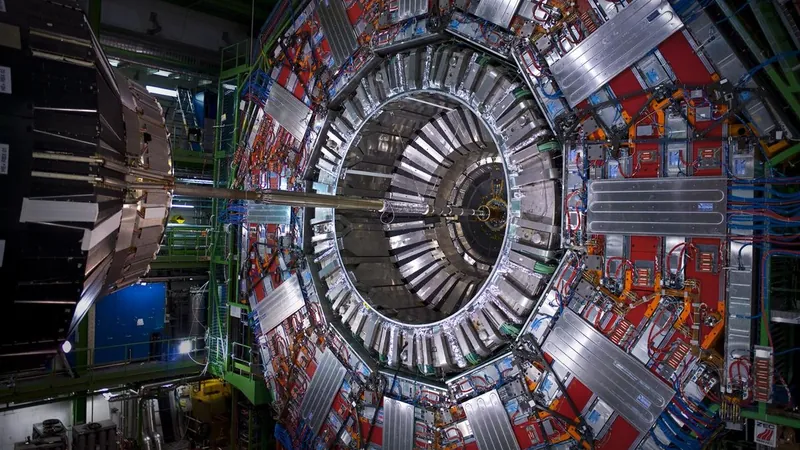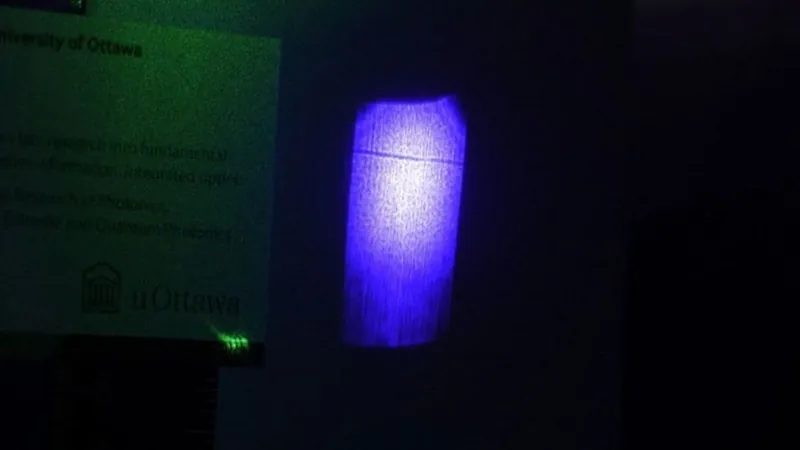
Groundbreaking Discovery: The W Boson Mystery Solved by Scientists, But What Does It Mean for Our Understanding of the Universe?
2024-09-26
Author: Yu
Introduction
In a stunning turn of events, researchers at the Large Hadron Collider (LHC) have confirmed the mass of the W boson particle to be exactly what the Standard Model of particle physics predicted. This development contradicts earlier measurements from Fermilab that suggested a different mass, opening up a Pandora's box of possibilities for new physics.
Significance of the Discovery
While the confirmation solidifies the Standard Model as our most accurate framework for understanding the universe's fundamental particles, many scientists had harbored hopes that the W boson's mass discrepancy would indicate new theories capable of unraveling mysteries like the nature of dark matter—an elusive substance that constitutes 85% of all matter in the cosmos yet remains undetectable directly.
Role of Bosons in Particle Physics
Bosons play a crucial role in our understanding of fundamental forces: the gluon mediates the strong force among quarks, the photon is responsible for electromagnetic interactions, and the weak force involves three different bosons: the W+ and W– bosons and the Z boson. Each of these particles decays quickly after their creation, making accurate measurement a significant challenge for physicists. The LHC collides protons at energies reaching 13 trillion electronvolts, fragmenting them into various particles, including bosons, in a process reminiscent of cosmic creations at the moment of the Big Bang.
Challenges in Measuring the W Boson Mass
The mass of the W boson is particularly tricky to measure because it decays into a lepton (such as an electron, muon, or tau) plus a neutrino—the latter being notoriously difficult to detect. Neutrinos are ghostly particles that traverse through most matter without interaction, which is why massive detectors, like those at the IceCube Neutrino Observatory in Antarctica, are required to capture their fleeting existence. Although the LHC has recently enhanced its capabilities to detect neutrinos, achieving this feat is complex.
Historical Context and Measurements
For years, the Standard Model has asserted that the W boson has a mass of approximately 80,357 MeV, with a small margin of error. However, a 2022 analysis of historical data from Fermilab's Tevatron suggested a measurement of 80,433 MeV—challenging the fundamental tenets of particle physics and raising excitement about potential new theories like supersymmetry, which suggests the existence of heavier counterparts to standard particles and offers intriguing implications for dark matter candidates known as WIMPs (Weakly Interacting Massive Particles).
Recent Findings from the LHC
In a fresh wave of experiments conducted by the LHC's ATLAS collaboration, the W boson’s mass was measured at 80,360 MeV, with an uncertainty of ±16 MeV, aligning beautifully with the predictions of the Standard Model. Now, additional measurements by the LHC's Compact Muon Solenoid (CMS) collaboration supported those findings with a mass of 80,360.2 ± 9.9 MeV, representing a margin of only 1.42 x 10^-25 kilograms—an incredibly precise measurement considering the tiny scale involved.
Implications of the Confirmation
Physicist Michalis Bachtis noted that this precision in measuring the mass of the W boson has profound implications. While many in the scientific community yearned for a discrepancy that could signal new dimensions of physics, the confirmed mass indicates a more intricate search will be needed for the answers to such cosmic puzzles. Bachtis stated, 'Everybody was hoping we would measure it away from the theory, igniting hopes for new physics. By confirming that the mass of the W boson is consistent with the theory, we have to search for new physics elsewhere.'
Future Directions in Research
This confirmation also paves the way for new explorations into the strength of the Higgs field or helps refine electroweak theory, as enhanced precision in particle measurement techniques evolves. Elisabetta Manca, a Ph.D. student working on this groundbreaking project, said, 'This new level of precision will allow us to tackle critical measurements involving the W, Z, and Higgs bosons with enhanced accuracy.'
Ongoing Challenges in Physics
Despite the excitement over the Standard Model's validation, the scientific community remains vigilant in its search for the elusive truth behind dark matter, dark energy, and the Hubble tension—issues that may one day force a reevaluation of our foundational physics as we continue on this journey to unlock the secrets of the universe.



 Brasil (PT)
Brasil (PT)
 Canada (EN)
Canada (EN)
 Chile (ES)
Chile (ES)
 España (ES)
España (ES)
 France (FR)
France (FR)
 Hong Kong (EN)
Hong Kong (EN)
 Italia (IT)
Italia (IT)
 日本 (JA)
日本 (JA)
 Magyarország (HU)
Magyarország (HU)
 Norge (NO)
Norge (NO)
 Polska (PL)
Polska (PL)
 Schweiz (DE)
Schweiz (DE)
 Singapore (EN)
Singapore (EN)
 Sverige (SV)
Sverige (SV)
 Suomi (FI)
Suomi (FI)
 Türkiye (TR)
Türkiye (TR)